The city of San Bernardino, California, population 210,000, recently became the second largest US city to file for bankruptcy protection. It is the third California city to file for bankruptcy this year and the fourth since the onset of the economic crisis in 2008.
The only city larger than San Bernardino to declare bankruptcy is Stockton, California, which officially filed a week earlier.
The immediate precursor to the bankruptcy filing was a city budget shortfall of $46 million. In addition, the city has $360 million in bond debt and other long term liabilities.
The city faced the near term prospect of not making payroll. Emergency services may also have been suspended. Regardless of the details of the eventual bankruptcy ruling, it will invariably be used to severely cut pensions and benefits for city workers, as well as to push forward massive cuts to social services upon which the working class depends.
The global economic downturn has hit the city particularly hard. Industrial vacancies doubled from 6.2 percent in 2007 to 12.4 percent in 2008. The unemployment rate reached 15 percent in 2012 compared with a 6.1 percent rate in 2007. Forty percent of residents are on some form of public assistance, with 34.6 percent below the official poverty line. This makes the city the poorest West Coast city in the country and the second poorest city after Detroit.
San Bernardino also ranks third in foreclosures among the 372 federally designated Metropolitan Statistical Areas in the US. Metropolitan Statistical Areas are comprised of regions which include a city as well as those suburbs and surrounding communities that have close economic links.
According to Leslie Appleton-Young, chief economist with the California Association of Realtors, the median home value in this area dropped a staggering 65.6 percent, from $350,290 in 2006 to $120,410 in 2009. This has caused a fall in property tax revenue by one sixth between 2007 and 2008 alone.
Foreclosure filings in the city of San Bernardino itself have risen 3,500 percent since 2006. In 2010, the city ranked fourth in the nation in number of foreclosures with one filing for every 133 households.
The region has experienced regular boom and bust periods starting in the late 19th century, when it was a major agricultural and wine making center. Defense and aerospace industries predominated during the Cold War period, but these virtually disappeared after the collapse of the Soviet Union in the early 1990s.
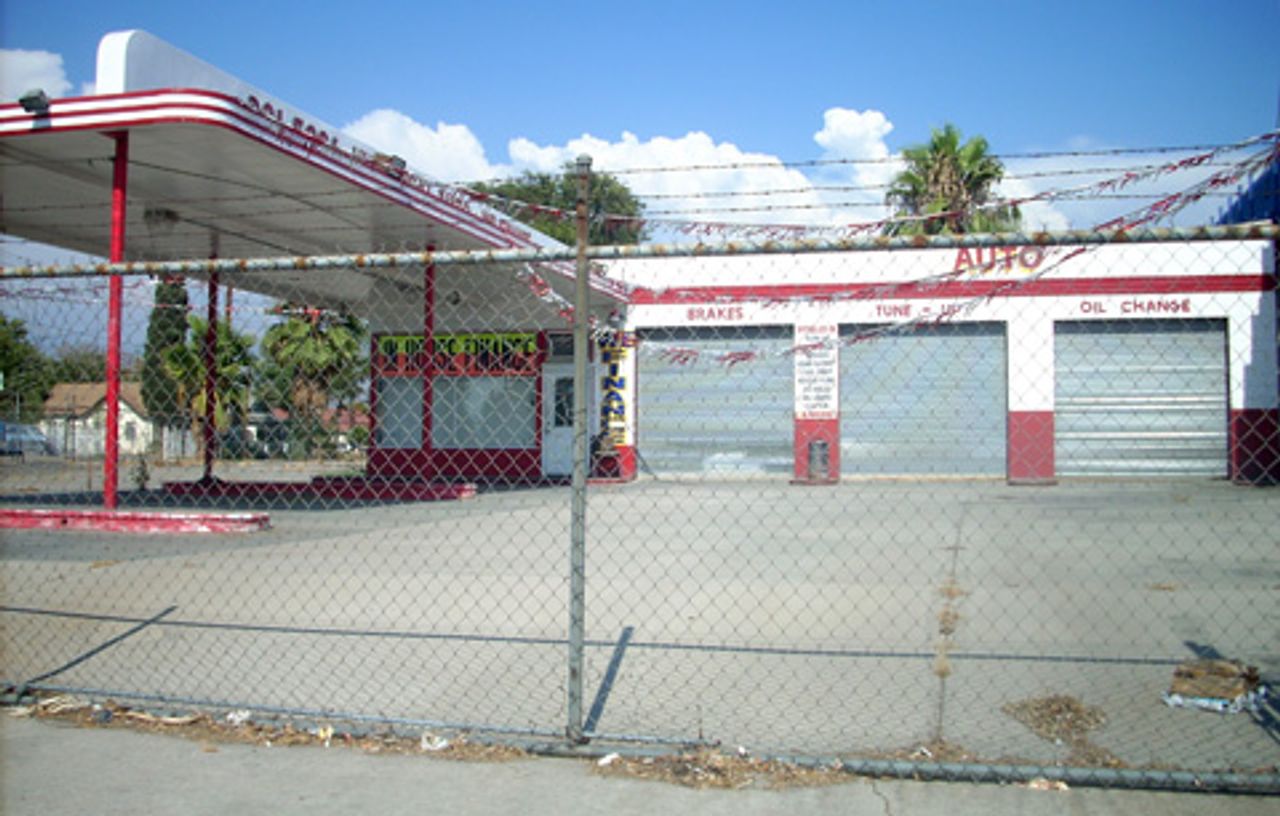 Recently shuttered garage in San Bernardino
Recently shuttered garage in San BernardinoThe area experienced a revival of sorts with the introduction of warehouse and distribution centers that took advantage of abundant cheap real estate and a low wage labor force. This also led to wide spread speculation on subprime mortgages.
Today, the city and surrounding regions are characterized by widespread poverty and urban blight. Abandoned lots and boarded up buildings are a common sight.
World Socialist Web Site reporters recently spoke with San Bernardino residents about social conditions in the city as well as the implications of the bankruptcy filing.
Leticia and her family were eating lunch at a neighborhood park that was not being maintained by the city. Morning park visitors often arrive early in order to clean the park's restrooms themselves.
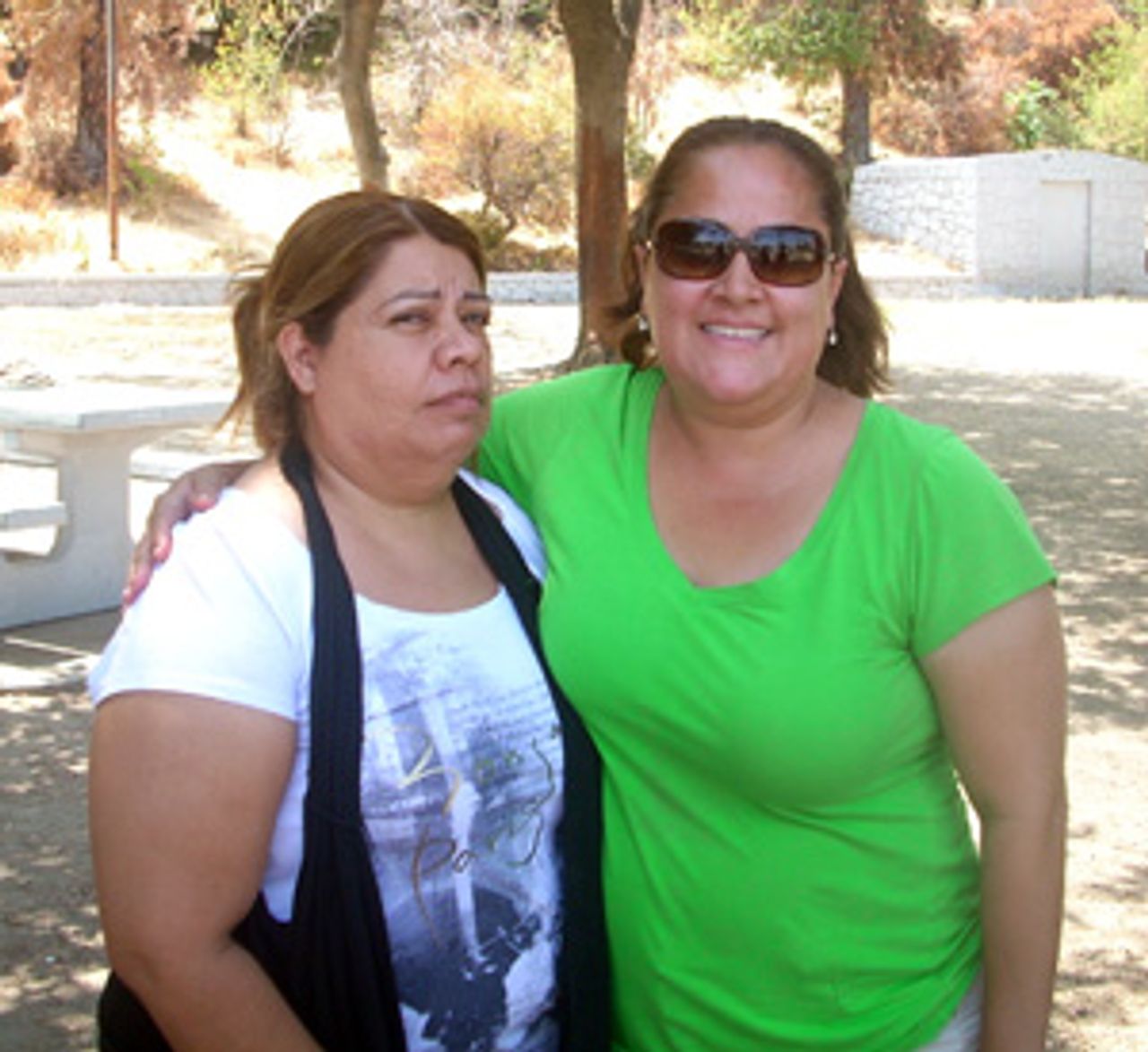 Leticia, left, and Laura
Leticia, left, and Laura“I've lived in San Bernardino for a very long time. Everything used to be very nice and very cheap. Everyone I knew had a house and jobs.
“However. I recently came back here from New York state after living there for two years. There are a lot of houses that are empty because the banks took them. For those that are still able to live in their houses, this is often because they have many family members who live in the same house or because they have to rent out rooms.
“As for me I'm not working now, but I used to have regular work in warehouses in the area.”
Leticia's friend Laura spoke about the difficulties finding a job.
“Unfortunately, there’s a lot of age discrimination in hiring around here. Once you apply, they give an interview for everybody. They say they’ll call you back, and then they always give the job to a much younger person because they know it’s easier to pay a young person next to nothing. Also, they work you to death and know that young people are less likely to need time off for health reasons.
“Not only that, they perform a credit check on you and they check for bankruptcies. Well, if you’re on welfare or unemployed, how can you possibly avoid being on bankruptcy and having credit problems.
“For me, I’m on welfare right now. Some stores won’t hire you once they find out you’re on welfare. So, as far as the city bankruptcy goes, a lot of people have no choice but to do that now, not just a few cities. But you do that and you have to wait up to 7 years to restore your credit.
“It used to be so easy to at least have a decent life and get a house. They ask you for so many things now, and your credit has to be so perfect. It’s ridiculous.”
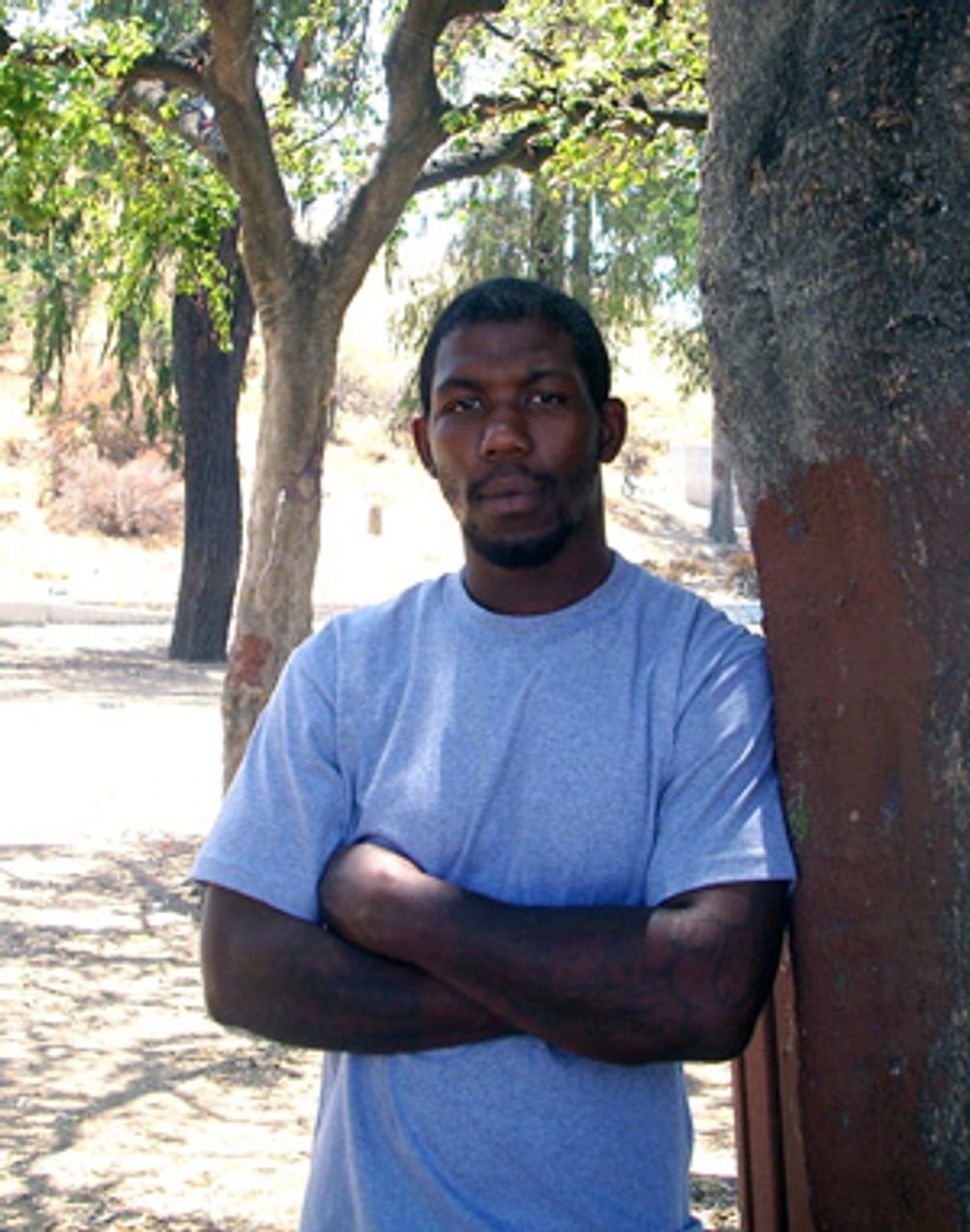 Aaron
AaronAaron is a 23-year-old San Bernardino resident who had just been laid off along with 40 others after working for the “Waggin’ Train” dog treats division of Nestle foods.
“I heard about the San Bernardino bankruptcy on the news. They had all that money, and they lost it all. I asked myself, ‘Are they serious?’ How could you just lose all that money after all the taxes we pay and the little they spend on this city. The roads are all in disrepair, fire stations have been closed, and they don’t maintain anything. Even this park we're in is a mess, and this is all before the bankruptcy.”
“This is our government. We work hard and pay taxes, and they’re supposed to have everything paid for and provided for.”
Asked if the bankruptcy filing raised questions that extend beyond the borders of San Bernardino, Aaron replied, “Yes it does. It can’t be a coincidence that all of these bankruptcies are happening in different states and different cities. They either hid the money or something. But I think you’re right. These are class questions and they need a class solution. I was excited about Obama, but he does serve the same interests. Working people really need to get together to solve these problems themselves. If they did, they would be unstoppable.”
A barber shop owner who wished to remain anonymous and who operates next to the Carousel Mall in San Bernardino, said, “This mall used to thrive, and it brought business to all the other small businesses in the area like mine. We used to have one donut shop centrally located on East Street, and it just closed two weeks ago. All the buses used to stop here too, and as you can see now there are no buses now. They closed the stop recently. And this lady, the donut shop owner, depended on that traffic for her business. Without the buses, you had no traffic. Without that, she had to close. This is just my opinion, but the city of San Bernardino has not invested to build anything up.
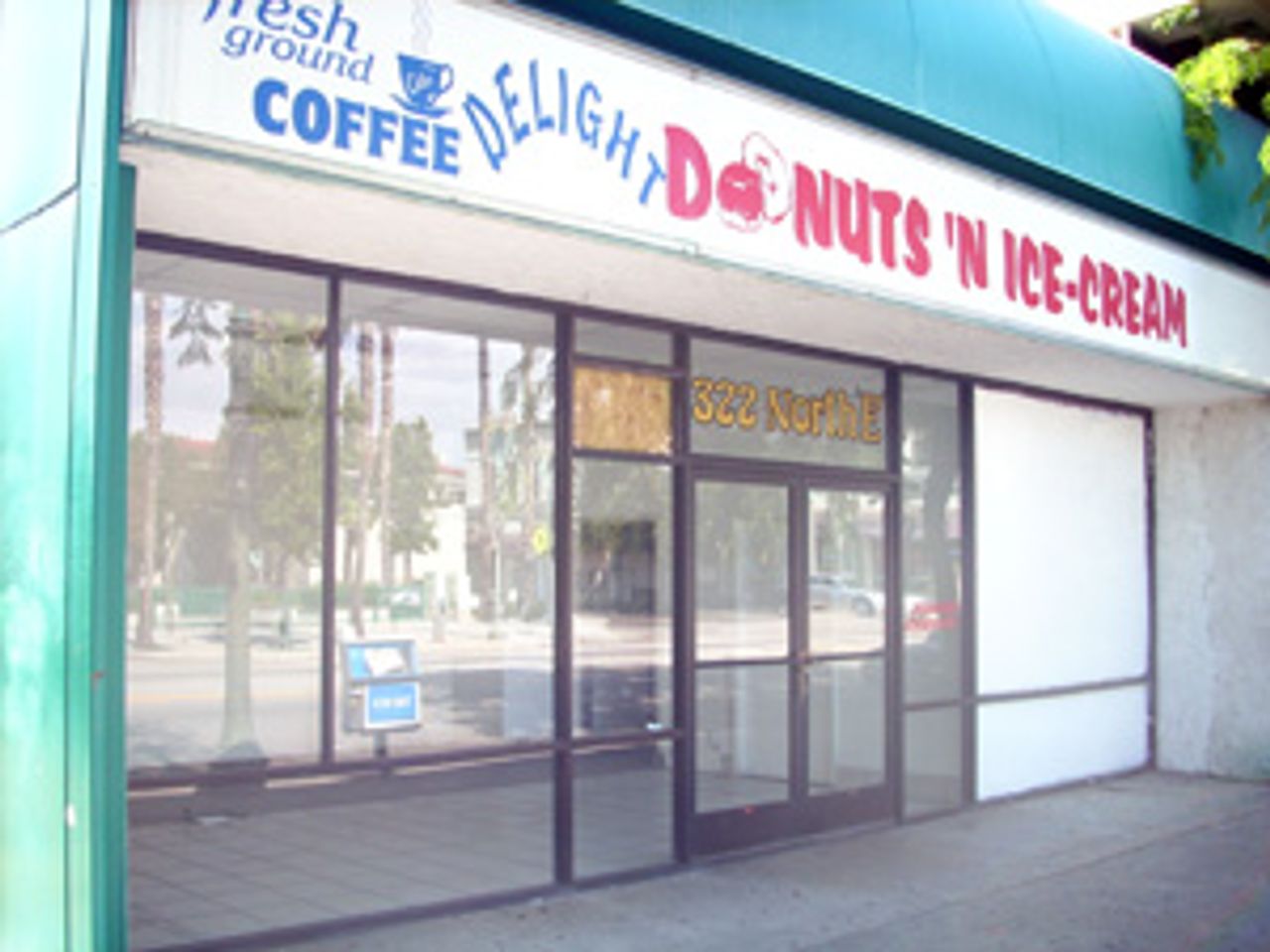 Donut shop forced to close after the area’s bus
Donut shop forced to close after the area’s bus route was eliminated
“For my own business, as far as walk-in customers goes, that’s fallen off completely. Basically, I have just repeat customers. The chance for new customers to come in is slim to none because of the situation with the bus stops and the mall.
“If you look out the window of my shop, you can see the movie theatre down the street. Just a few days ago, when the Batman movie opened, the summer's biggest movie, there was literally no one there. I was shocked.
“As far as the bankruptcy goes, I don’t think that’ll have too much of an effect on my business, which is already bad enough anyway. However, I heard that 40 police and firefighters have already quit in anticipation of the layoffs.”
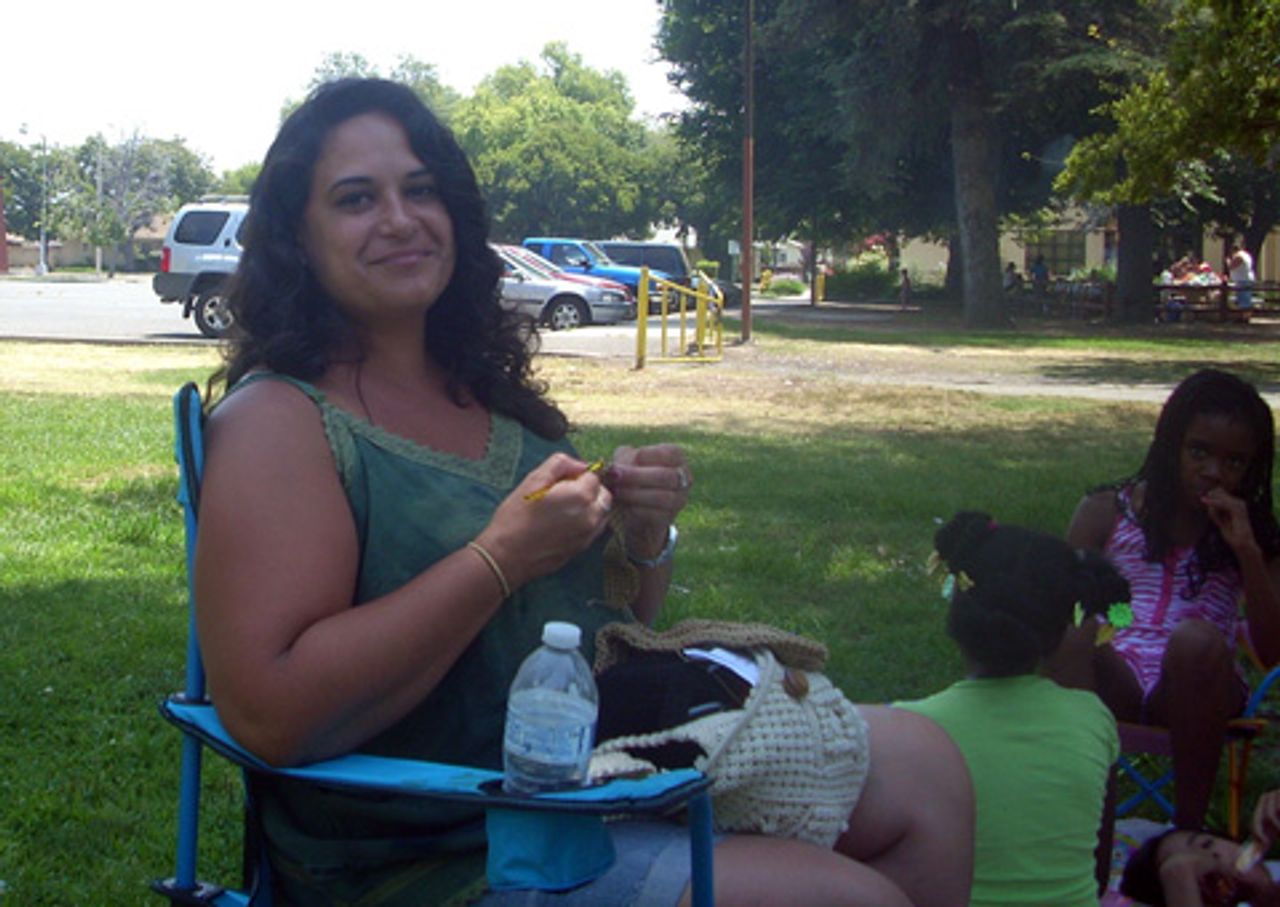 Beatrice
BeatriceBeatrice is currently unemployed and works odd jobs to make ends meet.
“As far as my story goes, I lost my job as a security guard in 2010, and things have been going downhill ever since. I was working in the county buildings. I couldn’t pay my mortgage, which was $777 a month. My house went into foreclosure. This was in 2011, although the foreclosure proceedings started in 2010.
“I don’t have a lot of training and schooling, but I do have a lot of job experience. I’m trying to go back to school now, but its tough with all the things I have to do to make ends meet. It’s also very tough to be motivated when you work very hard, but still you don’t have money, you don’t have a car and don’t have real ways to better yourself. Sometimes you just want to lock yourself in a room and never come out.
“Anyone who says that people are on welfare or public assistance because they’re lazy is lying. I’m doing so much to pull myself out of this. If only they knew.”
“Right now, I’m crocheting purses to make extra money, and I donate plasma to make a little bit of money too. Unfortunately, I never got unemployment although I do have food stamps and Medi-Cal for my daughter. The reason I don’t get unemployment is because of the child support we receive from my ex-husband.
“I really want a job so bad, but I know that things will still be tough if I get one. When you apply for a job these days, oftentimes you have no choice but to undercut yourself. You may have asked for $12 an hour a few years ago, but now you have to take minimum wage or nothing at all.”
Asked if the current economic crisis was being used by the wealthy to drive down the living standards of the working class, Beatrice’s friend answered. “Well yes it is. The rich are living off of the poor. The rich always find a way to make people spend more money and take more money for themselves. They have tax loopholes they can exploit.”
“The unemployment situation has gotten so bad that really the only people who get any jobs are the ones who are extremely well-connected. It’s not what you know, it’s who you know.
“So few people have jobs. Everyone’s made mistakes in their lives. That doesn’t mean they don’t deserve a job, and there’s so much work for people to do. Look how bad this city looks.”
